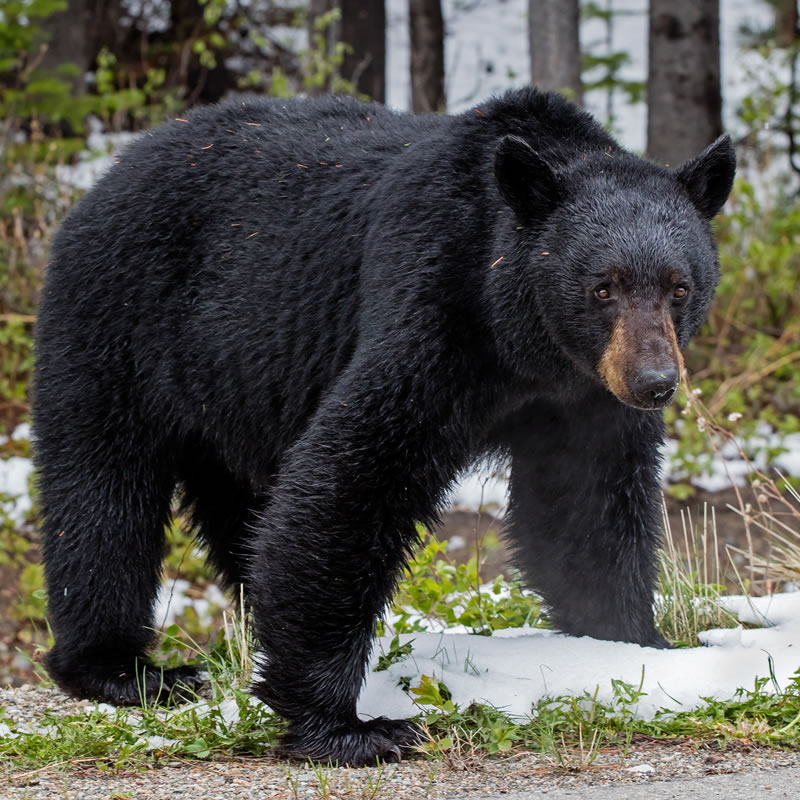
Scientific Name
Ursus americanus
Classification
| Kingdom | Animalia |
| Phylum | Chordata |
| Class | Mammalia |
| Order | Carnivora |
| Family | Ursidae |
| Genus | Ursus |
| Species | americanus |
IUCN Redlist Status

Location
American black bears can be found throughout Alaska and Canada, much of the United States, and into northern Mexico. While at one time their numbers were diminished due to poaching, their population has increased to an estimated 700,000 or more on the continent of North America.
Habitat
American black bears are often found in forested and mountainous regions of North America. These regions provide food and water resources for the bears and are often sparsely inhabited by people. They can also be found near swampy areas.
Black bears will often make dens in hollow logs or trees, caves or rock cavities.
Diet
American black bears are omnivores which means that they will eat both plants and meat. They eat a variety of grasses, berries, twigs, nuts and fruits. They also will eat grubs and insects. As is the stereotype of these animals, black bears will feed on the honey of bee hives when available. American black bears will hunt for fish and small mammals.
Size
Adults are generally 4 - 6.5 feet in length from the tip of the nose to the rear. They weigh between 100 - 400 pounds, but can weigh as much as 500 - 600 pounds. Males are heavier than females.
Description
As their name suggests, American black bears are, for the most part, covered by black fur. They only colors on them are a brown color on their snouts and possibly a white patch on their chest.
In some areas, such as the western and northern parts of North America, these bears may actually be a brown, blue or white color.
Black bears have 5 one-inch claws on each paw that they use for digging, tearing and climbing.
Adaptations
Perhaps the best adaptation of American black bears is their ability to eat a wide variety of foods. This adaptation enables the bears to survive in a wide variety of habitats throughout North America as well as survive near human populations if necessary.
American black bears can hibernate, to a certain degree, during the winter months if the temperature drops low enough. During this time bears' heart rates will slow and they will sleep for long periods of time. It is important to note that people should not approach bears at any time, even when it may appear that they are in a hibernation state. They can wake up from this deep sleep.
Reproduction
Mating between female and male black bears occurs in the summer months. The gestation or pregnancy period lasts approximately seven months, when female black bears will give birth in the winter months. Litters are most often between 1 - 4 cubs.
Other Facts
American black bears are state animals of Louisiana, New Mexico, West Virginia and Alabama.
Winnie the "Pooh" was named after a black bear named "Winnipeg" that was located in the London Zoo around 1915.
